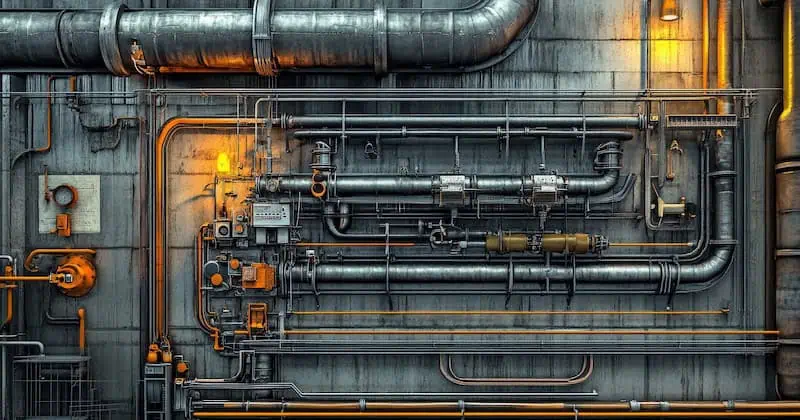The Hidden Costs Of Legacy Infrastructure
Aging systems carry a heavy financial and operational burden. Routine maintenance on legacy HVAC, plumbing, or electrical systems is significantly more expensive than that of newer, efficient models. Parts become harder to source, and emergency repairs often require costly, temporary solutions. Consider a healthcare facility experiencing an HVAC failure and having to urgently deploy a mobile HVAC unit to maintain operations. The disruption and expense are substantial.
Older systems also consume more energy, which conflicts with today’s sustainability standards. As energy efficiency becomes a critical aspect of corporate responsibility, failing to upgrade infrastructure risks not only higher costs, but also potential regulatory consequences.
Aging systems carry a heavy financial and operational burden. Routine maintenance on legacy HVAC, plumbing, or electrical systems is significantly more expensive than that of newer, efficient models. Parts become harder to source, and emergency repairs often require costly, temporary solutions. Consider a healthcare facility experiencing an HVAC failure and having to urgently deploy a mobile HVAC unit to maintain operations. The disruption and expense are substantial.
Proactive Steps To Modernize
Operating with outdated systems compromises an organization’s ability to compete. Efficiency and reliability are crucial, particularly in industries where system failures have severe consequences. Fortunately, there are clear steps facility management executives can take to future-proof operations. Here’s how to start:
1. Conduct A Comprehensive Infrastructure Assessment
Start by cataloging every major system, from HVAC to electrical and plumbing, and documenting their age, maintenance history, and current condition. Using a combination of manual inspections and digital data where possible, evaluate how these systems perform compared to modern efficiency standards. This process should also include gathering feedback from maintenance staff, who can provide insights into recurring issues or failures that may not be apparent from data alone.
2. Prioritize Based On Risk And Impact
After assessing the state of infrastructure, use a risk-based framework to prioritize projects. Consider factors like the expected remaining lifespan of a system, the potential impact of a failure, and external elements like environmental risks or local compliance standards. For example, facilities in areas prone to natural disasters like hurricanes or earthquakes may need to fast-track upgrades to ensure resilience.
3. Develop A Capital Planning Strategy
Establish a phased, long-term budget that outlines when and how each major system will be upgraded. Include contingencies to handle unexpected changes, such as systems failing earlier or later than anticipated. One approach is to benchmark your infrastructure’s expected lifespan against industry standards and consider historical data specific to your facility. If experience shows that HVAC units typically fail two years earlier than industry norms in your environment, adjust your timeline accordingly.
4. Plan For Training And Change Management
Once you know which systems will be updated, develop a training schedule for staff well in advance of implementation. New facility management technology often requires a different skill set — digital HVAC systems, for instance, may require IT expertise rather than just mechanical know-how. Engage with vendors or training consultants early to create a curriculum that prepares your team for the shift. Also, consider phased training to minimize disruption and ensure key staff are always available for critical operations.
The key to a successful modernization lies in meticulous planning. This includes proper scheduling, budgeting for system replacements, and developing contingencies. Consider scenarios where systems may fail sooner or later than expected. Planning for the unexpected helps prevent facility disruptions and mitigate financial strain.
Understanding the lifecycle of infrastructure is another essential component. Use industry benchmarks as guidelines, but also rely on historical data specific to your organization. Factors like local weather, compliance changes, and the natural aging process of systems should inform your strategy. For example, a roof in a hurricane-prone area may need more frequent assessments than one in a more stable environment.
Facility operations today demand strategic foresight and a commitment to continuous improvement. By embracing change and preparing for tomorrow’s needs, facility managers and owners can create environments that support long-term organizational success.





